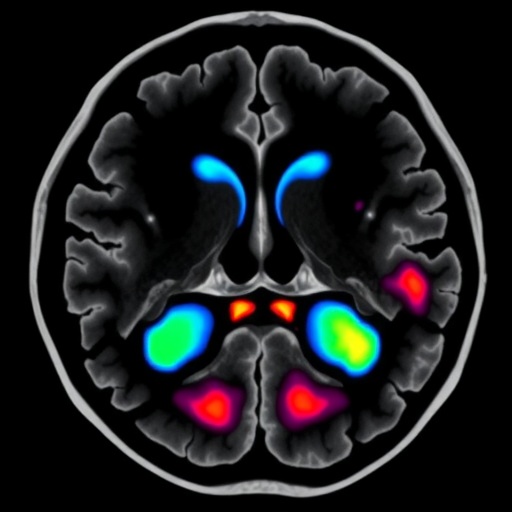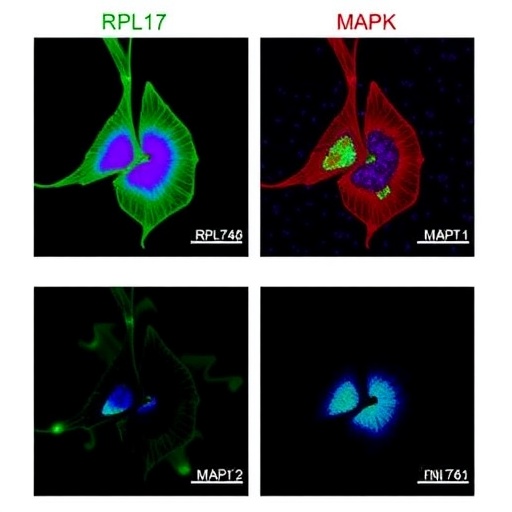WASHINGTON — In this advanced age of molecular sleuthing, a research team led by Georgetown Lombardi Comprehensive Cancer Center have findings that suggest tumors will eventually become resistant to drug inhibitors of a common cancer pathway (dubbed YAP/TAZ), now in preclinical development. But in the same study, published in Developmental Cell, they posit that pairing those inhibitors with another drug, now on the market, may deliver that desired fatal blow.
“Our study supports the benefit that YAP/TAZ inhibitors may initially offer benefit in treating a wide variety of tumors, but by drilling deep into how they would work, we also found a potential way to extend their benefit to patients,” says the study’s senior investigator, Chunling Yi, PhD, associate professor in the Tumor Biology Program at Georgetown Lombardi.
The YAP/TAZ pathway is known to act as central players in growth, survival, and spread of a number of tumors — such as breast, colorectal, liver, pancreatic and kidney cancers.
What Yi and her team, which included researchers from France and the University of Pennsylvania, did was to investigate exactly how this pathway aided cancer cells so effectively.
They knew that YAP and TAZ act like genetic cousins. They have very similar functions, the features of their proteins are alike, and because of this, they act as a back up for each other. “This is nature’s way of producing redundancy,” Yi says.
YAP and TAZ are part of the “Hippo” signaling pathway, which includes both tumor suppressors and oncogenes. YAP and TAZ proteins are oncogenic, and in some tumors, one or the other, or both, are over-expressed. The Hippo name refers to the fact that if mutations in tumor suppressors in this pathway, or expression of the oncogenes, can lead to uncontrolled growth.
To wit, a member of Hippo pathway, Merlin/NF2, is a tumor suppressor which, when mutated, leads to development of some kidney cancers as well as the inherited syndrome neurofibromatosis type 2 (NF2), a nervous system tumor syndrome that mainly afflicts children. Yi has long studied NF2, and in this study she sought to see what interaction YAP/TAZ has with NF2. Using mouse models, the team found that silencing the YAP/TAZ pathway shrinks NF2 deficient tumors.
That finding validated the benefit of using a YAP/TAZ inhibitor, but researchers proceeded to look under the hood — why did the tumors shrink?
They found that YAP/TAZ promotes growth because they function as a metabolic regulator; they maintain the flow of energy producing by glucose (sugar) to cancer cells in order to build all the new cellular components required to expand and grow.
The team further discovered that YAP/TAZ inhibition impedes the use of glucose, forcing cancer cells to use their own mitochondria for energy production. (YAP/TAZ independently suppress a cancel cell’s use of its own mitochondria, Yi says, because exclusive use of that powerhouse can be toxic to cells.) The result was that the mitochondria in the NF2 cancer cells became dysfunctional upon YAP/TAZ inhibition and produced a lot of oxidative stress that damaged the tumor cells, shrinking them and shutting down growth.
Over time, however, other signaling pathways come into play that allows tumor cells to rewire their metabolic network to survive the new nutrient conditions, rendering them independent of the YAP/TAZ molecular pathway. The researchers found that use of trametinib (approved in 2013 for treatment of melanoma) or similar drugs in addition to YAP/TAZ inhibitors disrupted that cross-talk, and may provide a way to counter the resistance that YAP/TAZ-driven cancers develop to YAP/TAZ inhibiting drugs.
“Our work unravels a complex metabolic and signaling circuitry centered around YAP/TAZ that governs the growth and survival of cancers,” she says. “It provides a map to follow for clinical testing.”
###
In addition to Yi, co-authors of the study include first author Shannon M. White, a Ph.D. student, Maria Laura Avantaggiati, MD, PhD, Cristina DiPoto, PhD, Geoffrey T. Gibney, MD, Habtom W. Ressom, PhD, and Michael B. Atkins, MD, all from Georgetown Lombardi; Ivan Nemazanyy, from Institut Necker Enfants and Mario Pende, PhD, from INSERM, Paris; and Yang Yang and Jeffrey Field, PhD, from the University of Pennsylvania.
The research was support in part by NIH grants (R01CA193698, R01CA187090, P50-CA101942-10), a Toulmin Pilot Award, a Stanley and Linda Sher research grant from Georgetown University, a Cancer Center Support Grant (CA051008), the V Foundation, Children’s Tumor Foundation and the Advucure Foundation.
The authors report having no personal financial interests related to the study.
About Georgetown Lombardi Comprehensive Cancer Center
Georgetown Lombardi Comprehensive Cancer Center is designated by the National Cancer Institute as a comprehensive cancer center — the only cancer center of its kind in the Washington, D.C. area. A part of Georgetown University Medical Center and MedStar Georgetown University Hospital, Georgetown Lombardi seeks to improve the diagnosis, treatment, and prevention of cancer through innovative basic and clinical research, patient care, community education and outreach, and the training of cancer specialists of the future. Connect with Georgetown Lombardi on Facebook (Facebook.com/GeorgetownLombardi) and Twitter (@LombardiCancer).
About Georgetown University Medical Center
Georgetown University Medical Center (GUMC) is an internationally recognized academic health and science center with a four-part mission of research, teaching, service and patient care (through MedStar Health). GUMC’s mission is carried out with a strong emphasis on public service and a dedication to the Catholic, Jesuit principle of cura personalis — or “care of the whole person.” The Medical Center includes the School of Medicine and the School of Nursing & Health Studies, both nationally ranked; Georgetown Lombardi Comprehensive Cancer Center, designated as a comprehensive cancer center by the National Cancer Institute; and the Biomedical Graduate Research Organization, which accounts for the majority of externally funded research at GUMC including a Clinical and Translational Science Award from the National Institutes of Health. Connect with GUMC on Facebook (Facebook.com/GUMCUpdate), Twitter (@gumedcenter).
Media Contact
Karen Teber
[email protected]




